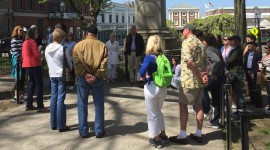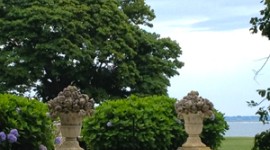Landscape Information
Located in the rural area of Middletown and bounded by Green End Avenue in the north, Second Beach in the south, Paradise Avenue in the west, and Third Beach Road in the east, this coastal valley covers about one square mile and is marked by seven puddingstone ridges, which run from north to south, with one of the more prominent outcroppings known as Hanging Rock. To the south are Nelson and Gardiner Ponds, and, finally, Sachuest Bay, cradled on the west by the 242 acres of peninsular salt marshes and rocky shoreline of Sachuest Point National Wildlife Refuge. Along the western arm of the bay is Purgatory Chasm, a 50-foot-deep, ten-foot-wide trench created by glacial activity and further eroded by seawater.
Beginning in the 1600s, much of the valley, as well as Sachuest Point, was cleared and used for livestock grazing and farming. Paradise Farm was established in the mid-eighteenth century, and purchased by George Norman in the late nineteenth century, who thereby secured water rights for the Newport Water Works and changed much of the area’s topography, doubling the size of Gardiner’s Pond and re-routing the Maidford River. The valley was famously frequented by the Irish philosopher George Berkeley, who lived nearby, and its stark ridges and seascapes were often celebrated by painters in the late 1800s, including William Trost Richards, John Frederick Kensett, and John LaFarge. While its northern section is now occupied by housing, nearly half of its acreage belongs to the Norman Bird Sanctuary, established in 1949.














